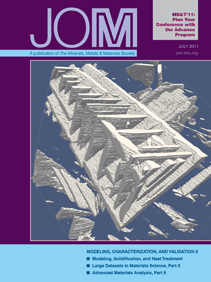VISIT THE
JOM COVER GALLERY
|
|
Complying with the Statutory Written Description
Requirement in a U.S. Utility Patent Application
Arnold B. Silverman
Failure to comply with the written
description requirement can result in a
patent application being rejected or can
be the basis for challenging validity
of a patent.
The U.S. patent system, which has
its origin in the U.S. Constitution,
provides as an incentive for inventors
to disclose their inventions a limited
exclusionary right during the term
of the patent. More specifically, an
inventor, or the inventor’s assignee, has
the right to keep others from making,
using, offering for sale, selling, or
importing the claimed invention. After
expiration of the patent, the public
obtains the right to make free use of
the invention. In order for this right
to be meaningful, the invention must
be described in such clear and detailed
terms that the public is provided with
adequate guidance regarding how to
practice the invention.
Section 112 of the Patent Act states
| “The specification shall contain a
written description of the invention,
and of the manner and process of
making and using it, in such full, clear,
concise and exact terms as to enable
any person skilled in the art to which
it pertains, or with which it is most
nearly connected, to make and use
the same, and shall set forth the best
mode contemplated by the inventor of
carrying out his invention.” |
One cannot obtain a valid patent
while playing one’s card so close to
one’s vest that the requirements of
this paragraph are not met. The patent
application is addressed to one who is
skilled in the art to which the invention
pertains. The application, therefore, need not contain disclosure of what is
already known to those skilled in the
art. In fact, there are court opinions
stating that it is preferred that such
information not be included.
A part of the written description
requirement is that an “enabling disclosure” must be provided. This requires
that one skilled in the art or science to
which the invention relates would be
enabled from the disclosure to practice
the invention without having to engage
in “undue experimentation.” The mere
fact that some experimentation is
required does not mean that disclosure
fails to satisfy the enabling requirement.
There are instances wherein reasonable
minds could differ. It is best to err in
the direction of providing additional
details above and beyond what might
arguably be provided in satisfaction of
the minimum enablement requirement.
Another portion of the written
description requirement is that the
invention contains a description of the “
best mode” of practicing the invention
known to the inventor at the time of
filing the application. This portion of
the requirement involves the inventor’s
good-faith belief at the time of filing. It
prevents the inventor from withholding
the form of the invention believed to be
the best mode while seeking to obtain
a valid patent. It also does not matter
if the inventor, in good faith, believes
a particular approach is the best mode
as of the filing date and later learns
that there is a better mode so long as
there was good-faith compliance as of
the filing date.
The written description also should
set forth, in detail, the invention for
which a patent is sought in such a way
as to distinguish it from prior art inventions.
It should describe completely one or more specific embodiments of the
method, machine, product, composition
of matter, or improvement invented,
and the manner and method of making
and using the invention.
In chemical and metallurgical cases,
it is common to provide experimental
data that helps to define the invention
including, where applicable, broad
operable composition ranges or process
parameters such as temperature, time
and pressure, as well as narrower
preferred ranges. Such data may also
include comparative data that compares
the invention with related performance
of prior art. Such content may also be
employed with respect to other technologies.
Where appropriate, examples
disclosing how to use the invention
may be provided. These examples may
be actual test results or hypothetical
examples that have instructional value.
It will be appreciated, therefore,
that the written disclosure requirement
serves to satisfy the objective of the
public obtaining ready free use of the
invention once the patent has expired.
As will be apparent, it is critical
that inventors make clear and complete
disclosures of their inventions to their
intellectual property attorney in order
that a patent application that satisfies
the written description requirement
can be filed.
Arnold B. Silverman is chair of the Intellectual
Property department and a member of Eckert
Seamans Cherin & Mellott, LLC in Pittsburgh,
Pennsylvania.
For more information, contact A.B. Silverman at Eckert
Seamans Cherin & Mellott, LLC, 600 Grant Street, 44th Floor, Pittsburgh,
Pennsylvania 15219; (412) 566-2077; fax (412) 566-6099; e-mail abs@escm.com.
|

